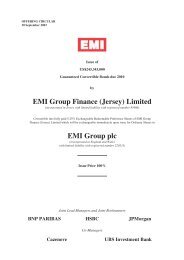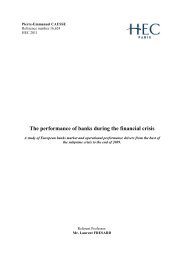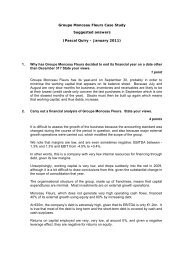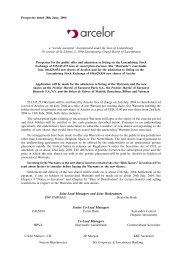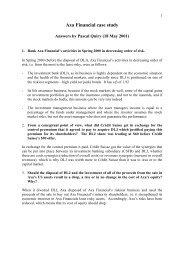Thesis_gd_final_vers.. - Vernimmen
Thesis_gd_final_vers.. - Vernimmen
Thesis_gd_final_vers.. - Vernimmen
You also want an ePaper? Increase the reach of your titles
YUMPU automatically turns print PDFs into web optimized ePapers that Google loves.
Progress in both financial and information technology have given banks new means to<br />
manage their risks and interest rate exposures. This was made possible by the development of<br />
increasingly sophisticated risk-models thanks to the rise in computing capacity, and new financial<br />
products such as derivatives that offer the possibility to implement complex and targeted risk<br />
management policies. In the 1990s, banks began to use new tools based on Value-at-Risk (VaR).<br />
Moreover the Basle Capital Accord adopted by the largest banks in the late 1990s and early 2000s<br />
went one step further in increasing the link between regulatory capital requirements and credit or<br />
asset risk. To comply with this new regulatory framework, banks have been continuing to develop<br />
their risk management models to estimate their exposures, default rates, loss given default, etc.<br />
Internet also revolutionized front-office technologies and banking was no exception. The<br />
most widespread strategy has become the click-and-mortar, which combines a website with an<br />
existing network of branches and ATMs. Indeed, there were very few internet-only independent<br />
players and most of them have failed or shut their operations. Internet-only subsidiaries of large<br />
banks have also been reconverted to participate in a click-and-mortar strategy. We can distinguish<br />
between two types of websites: informational ones and transactional ones. According to Berger<br />
(2003), 37.3% of national banks have a transactional website and an additional 27.7% have only an<br />
informational website in 2002. The adoption rate of transactional website is very much linked to<br />
the bank size, with 100% of banks with more than 10 billions in total assets having one in 2000<br />
and only 20% of banks with 100 million or less in total having one. However the adoption rate has<br />
been rapidly increasing. Even though Internet remains a marginal channel in the distribution of<br />
banking product and services it has been gaining share against other channels and helped reduce<br />
costs as well as problems associated with geography and distance.<br />
ii) Technological change impact on bank concentration<br />
Technological change has favoured bank concentration through mergers and acquisitions for<br />
several reasons. First, new technologies and financial products have created strong potential<br />
economies of scale. Deregulation coupled with technological innovation may have allowed the<br />
largest commercial banks to create new services and products which bear significant economies of<br />
scale: it is true for example for Internet-banking, ATMs, call-centers. Concerning wholesale and<br />
investment banking, larger banks have developed technology driven businesses where a large scale<br />
is a decisive advantage: derivatives, securitization and other off-balance sheet activities. At the<br />
same time new technology applied to existing products and services also generated higher<br />
potential economies of scale: it is true for electronic payment or credit scoring which has replaced<br />
relationship and soft information at larger banks because these methods bear high diseconomies<br />
of scale. The importance of size is shown by the fact that larger banks have always been the first to<br />
- 14 -



